
Mechanism of Action and Pharmacokinetics Testosterone Propionate
Testosterone is absorbed in the digestive tract, through the skin and oral mucosa. However, it undergoes extensive hepatic first-pass metabolism when administered orally and, therefore, is usually administered intramuscularly, subcutaneously or transdermally. In addition, the basic testosterone molecule has been modified to obtain active derivatives orally and prolong the duration of the effect. The alkylation of position 17 a produces derivatives that are metabolized more slowly in the liver and, for this reason, can be administered orally. Esterification of group 17 to hydroxyl increases liposolubility and leads to a slower systemic absorption if administered by intramuscular injection. The absorption rate of the esters is related to the size of the ester group. Testosterone esters are hydrolyzed to testosterone after absorption. Testosterone binds approximately 80% to the sex hormone binding globulin. The 19-nostestosterone derivatives and the 17-methylated derivatives are characterized by reduced binding to this globulin. The plasma elimination half-life of testosterone ranges from 10 to 100 min. It is mainly metabolized in the liver through an oxidation in the 17-OH group with the formation of androstenedione, which is further metabolized to androstenolone, weakly androgenic, and ethiocolanolone, inactive, which are excreted in the urine mainly as glucuronoconjugates and sulfates. Approximately 6% is excreted unmodified by feces after undergoing enterohepatic recirculation. Testosterone is transformed into the most active dihydrotestosterone derivative in some target organs by the effect of 5 a-reductase. 19-nortestosterone derivatives are less sensitive to this enzyme. Small amounts of testosterone are aromatized in the body, leading to the formation of estrogenic derivatives in the body. Derivatives with a saturated A ring, such as mesterolone, aromatize less estrogen.
Indications
It is used in the treatment of male hypogonadism. It is usually active in combination with testosterone enanthate.
It is used in acute renal failure in the form of oily solutions for intramuscular route, topical route is used
It is used as an adjunct in postmenopausal breast carcinoma, some postmenopausal disorders and late puberty in children.
Posology
- In male hypogonadism: In adults, in the form of oily solutions for intramuscular route, administered in doses of 10-50 mg, two or three times a week.
- In acute renal failure: in dosages of 25 mg / day, for a maximum of 10 days.
Contraindications
TESTOSTERONES should be avoided in the following cases:
Pregnancy: There are reports of virilization of the female fetus after maternal treatment with testosterone or methyl testosterone during pregnancy.
Breastfeeding: the use of testosterones in nursing mothers should be avoided, due to the potential androgenic effect on the infant.
Porphyria: Androgens are not considered safe in patients with porphyria, although contradictory experimental evidence of porphyrinogenesis is available.
Adverse reactions
Testosterone and other androgens can cause side effects related to its androgenic and anabolic activities: increased retention of nitrogen, water and sodium, edema, increased vascularity of the skin, hypercalcemia, impaired glucose tolerance and increased growth Bone and skeletal weight. Other effects consist of an increase in cholesterol values ??linked to low density lipoproteins, decrease in cholesterol values ??linked to high density lipoproteins, increased hematocrit and increased fibrinolytic activity. Androgens can cause headache, depression and gastrointestinal bleeding. It has been indicated that androgens can induce sleep apnea in predisposed patients.
Abnormal results of liver function tests have been described and case reports on hepatotoxicity, such as jaundice and cholestatic hepatitis, have been published. These adverse liver effects have been predominantly identified with 17-alkylated derivatives.
In men, high doses suppress spermatogenesis and cause degenerative changes in the seminiferous ducts. Priapism is a sign of excessive doses that is observed especially in elderly men. Gynecomastia has been described. Androgens can cause prostatic hyperplasia and would accelerate the growth of malignant prostate neoplasms.
In women, the androgen inhibitory action on ovarian activity and menstruation. Its continuous use produces symptoms of virilization, it is not reversible in all cases, even after the interruption of treatment.
Boys experience signs of virilization: boys have early sexual development with phallic hypertrophy and more frequent erections, and girls, clitoral hypertrophy. Some boys may have gynecomastia.
Restrictions of Use
Do not use in case of hypersensitivity to some of its components; during pregnancy and breastfeeding period. Also, do not use in patients with high blood pressure, or in patients with cardiovascular problems, liver and kidney dysfunction.
Overdose
Treatment in case of overdose: There have been no reports of overdose with the product.


أعدت للمنشطات دو
برج ليوا بوكس أبو ظبي
Liwa Tower P.O.
Box 904 Abu Dhabi
(9712) 6131 432
